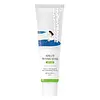What's inside
What's inside
 Key Ingredients
Key Ingredients

 Benefits
Benefits

 Concerns
Concerns

No concerns
 Ingredients Side-by-side
Ingredients Side-by-side

Butyl Methoxydibenzoylmethane 3%
UV AbsorberHomosalate 5%
Skin ConditioningEthylhexyl Salicylate 4.5%
UV AbsorberOctocrylene 2.8%
UV AbsorberBenzophenone-3 3%
UV AbsorberWater
Skin ConditioningAlcohol Denat.
AntimicrobialButylene Glycol
HumectantTocopheryl Acetate
AntioxidantSodium Hyaluronate
HumectantCamellia Sinensis Leaf Extract
AntimicrobialAnthemis Nobilis Flower Extract
MaskingAlgae Extract
EmollientTriticum Vulgare Germ Extract
Skin ConditioningLaminaria Ochroleuca Extract
Skin ConditioningPolygonum Cuspidatum Root Extract
AntioxidantSqualane
EmollientHordeum Vulgare Extract
EmollientLilium Tigrinum Extract
Skin ConditioningTuna Extract
Skin ConditioningCaffeine
Skin ConditioningAcrylates Copolymer
Caprylic/Capric Triglyceride
MaskingCaprylyl Glycol
EmollientCholesterol
EmollientErgothioneine
AntioxidantGlycerin
HumectantSucrose
HumectantAlcaligenes Polysaccharides
EmollientThermus Thermophillus Ferment
Skin ConditioningSorbitan Sesquiisostearate
EmulsifyingTetrahexyldecyl Ascorbate
AntioxidantHexylene Glycol
EmulsifyingAcrylates/Beheneth-25 Methacrylate Copolymer
Sodium Hydroxide
BufferingDehydroxanthan Gum
Emulsion StabilisingDipropylene Glycol
HumectantCarbomer
Emulsion StabilisingPPG-8-Ceteth-20
EmulsifyingDextrin Palmitate
EmulsifyingCyclodextrin
AbsorbentAcrylates/C10-30 Alkyl Acrylate Crosspolymer
Emulsion StabilisingSorbeth-30 Tetraisostearate
EmulsifyingGlyceryl Stearate
EmollientPolymethylsilsesquioxane
Ammonium Acryloyldimethyltaurate/Vp Copolymer
BHT
AntioxidantEthylbisiminomethylguaiacol Manganese Chloride
AntioxidantDisodium EDTA
Phenoxyethanol
PreservativeButyl Methoxydibenzoylmethane 3%, Homosalate 5%, Ethylhexyl Salicylate 4.5%, Octocrylene 2.8%, Benzophenone-3 3%, Water, Alcohol Denat., Butylene Glycol, Tocopheryl Acetate, Sodium Hyaluronate, Camellia Sinensis Leaf Extract, Anthemis Nobilis Flower Extract, Algae Extract, Triticum Vulgare Germ Extract, Laminaria Ochroleuca Extract, Polygonum Cuspidatum Root Extract, Squalane, Hordeum Vulgare Extract, Lilium Tigrinum Extract, Tuna Extract, Caffeine, Acrylates Copolymer, Caprylic/Capric Triglyceride, Caprylyl Glycol, Cholesterol, Ergothioneine, Glycerin, Sucrose, Alcaligenes Polysaccharides, Thermus Thermophillus Ferment, Sorbitan Sesquiisostearate, Tetrahexyldecyl Ascorbate, Hexylene Glycol, Acrylates/Beheneth-25 Methacrylate Copolymer, Sodium Hydroxide, Dehydroxanthan Gum, Dipropylene Glycol, Carbomer, PPG-8-Ceteth-20, Dextrin Palmitate, Cyclodextrin, Acrylates/C10-30 Alkyl Acrylate Crosspolymer, Sorbeth-30 Tetraisostearate, Glyceryl Stearate, Polymethylsilsesquioxane, Ammonium Acryloyldimethyltaurate/Vp Copolymer, BHT, Ethylbisiminomethylguaiacol Manganese Chloride, Disodium EDTA, Phenoxyethanol
Water
Skin ConditioningZinc Oxide
Cosmetic ColorantCyclohexasiloxane
EmollientButyloctyl Salicylate
Skin ConditioningPropanediol
SolventPropylheptyl Caprylate
EmollientIsododecane
EmollientCaprylyl Methicone
Skin ConditioningLauryl Polyglyceryl-3 Polydimethylsiloxyethyl Dimethicone
Skin ConditioningMethyl Methacrylate Crosspolymer
Methyl Trimethicone
Skin ConditioningAdansonia Digitata Seed Extract
Skin ConditioningCryptomeria Japonica Leaf Extract
HumectantNelumbo Nucifera Leaf Extract
Skin ConditioningSaccharomyces Ferment Filtrate
HumectantGlyceryl Glucoside
HumectantSodium Hyaluronate
HumectantHyaluronic Acid
HumectantGlycerin
HumectantButylene Glycol
HumectantTriethoxycaprylylsilane
Artemisia Annua Extract
MaskingAnthemis Nobilis Flower Oil
MaskingPinus Sylvestris Leaf Oil
MaskingEthylhexylglycerin
Skin ConditioningAscorbic Acid
AntioxidantTocopherol
AntioxidantGlyceryl Caprylate
EmollientCaprylyl Glycol
EmollientPolymethylsilsesquioxane
1,2-Hexanediol
Skin ConditioningPolyglyceryl-2 Dipolyhydroxystearate
Skin ConditioningDisteardimonium Hectorite
StabilisingMagnesium Sulfate
Water, Zinc Oxide, Cyclohexasiloxane, Butyloctyl Salicylate, Propanediol, Propylheptyl Caprylate, Isododecane, Caprylyl Methicone, Lauryl Polyglyceryl-3 Polydimethylsiloxyethyl Dimethicone, Methyl Methacrylate Crosspolymer, Methyl Trimethicone, Adansonia Digitata Seed Extract, Cryptomeria Japonica Leaf Extract, Nelumbo Nucifera Leaf Extract, Saccharomyces Ferment Filtrate, Glyceryl Glucoside, Sodium Hyaluronate, Hyaluronic Acid, Glycerin, Butylene Glycol, Triethoxycaprylylsilane, Artemisia Annua Extract, Anthemis Nobilis Flower Oil, Pinus Sylvestris Leaf Oil, Ethylhexylglycerin, Ascorbic Acid, Tocopherol, Glyceryl Caprylate, Caprylyl Glycol, Polymethylsilsesquioxane, 1,2-Hexanediol, Polyglyceryl-2 Dipolyhydroxystearate, Disteardimonium Hectorite, Magnesium Sulfate
 Reviews
Reviews

Ingredients Explained
These ingredients are found in both products.
Ingredients higher up in an ingredient list are typically present in a larger amount.
Butylene Glycol (or BG) is used within cosmetic products for a few different reasons:
Overall, Butylene Glycol is a safe and well-rounded ingredient that works well with other ingredients.
Though this ingredient works well with most skin types, some people with sensitive skin may experience a reaction such as allergic rashes, closed comedones, or itchiness.
Learn more about Butylene GlycolCaprylyl Glycol is a humectant and emollient, meaning it attracts and preserves moisture.
It is a common ingredient in many products, especially those designed to hydrate skin. The primary benefits are retaining moisture, skin softening, and promoting a healthy skin barrier.
Though Caprylyl Glycol is an alcohol derived from fatty acids, it is not the kind that can dry out skin.
This ingredient is also used as a preservative to extend the life of products. It has slight antimicrobial properties.
Learn more about Caprylyl GlycolGlycerin is already naturally found in your skin. It helps moisturize and protect your skin.
A study from 2016 found glycerin to be more effective as a humectant than AHAs and hyaluronic acid.
As a humectant, it helps the skin stay hydrated by pulling moisture to your skin. The low molecular weight of glycerin allows it to pull moisture into the deeper layers of your skin.
Hydrated skin improves your skin barrier; Your skin barrier helps protect against irritants and bacteria.
Glycerin has also been found to have antimicrobial and antiviral properties. Due to these properties, glycerin is often used in wound and burn treatments.
In cosmetics, glycerin is usually derived from plants such as soybean or palm. However, it can also be sourced from animals, such as tallow or animal fat.
This ingredient is organic, colorless, odorless, and non-toxic.
Glycerin is the name for this ingredient in American English. British English uses Glycerol/Glycerine.
Learn more about GlycerinPolymethylsilsesquioxane is a silicone used as a film forming agent.
When applied to the skin, this ingredient creates an invisible film on the surface. This film still allows oxygen to pass through, but prevents moisture from escaping. This can help condition and hydrate the skin. It also leaves a silky feel when applied.
Polymethylsilsesquioxane has not been shown to clog pores. It has been deemed safe to use up to 55%, but most cosmetics use much less.
If you have concerns about using this ingredient, we recommend speaking with a professional.
Learn more about PolymethylsilsesquioxaneSodium Hyaluronate is hyaluronic acid's salt form. It is commonly derived from the sodium salt of hyaluronic acid.
Like hyaluronic acid, it is great at holding water and acts as a humectant. This makes it a great skin hydrating ingredient.
Sodium Hyaluronate is naturally occurring in our bodies and is mostly found in eye fluid and joints.
These are some other common types of Hyaluronic Acid:
Learn more about Sodium HyaluronateWater. It's the most common cosmetic ingredient of all. You'll usually see it at the top of ingredient lists, meaning that it makes up the largest part of the product.
So why is it so popular? Water most often acts as a solvent - this means that it helps dissolve other ingredients into the formulation.
You'll also recognize water as that liquid we all need to stay alive. If you see this, drink a glass of water. Stay hydrated!
Learn more about Water